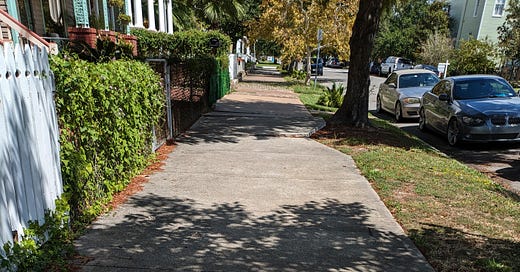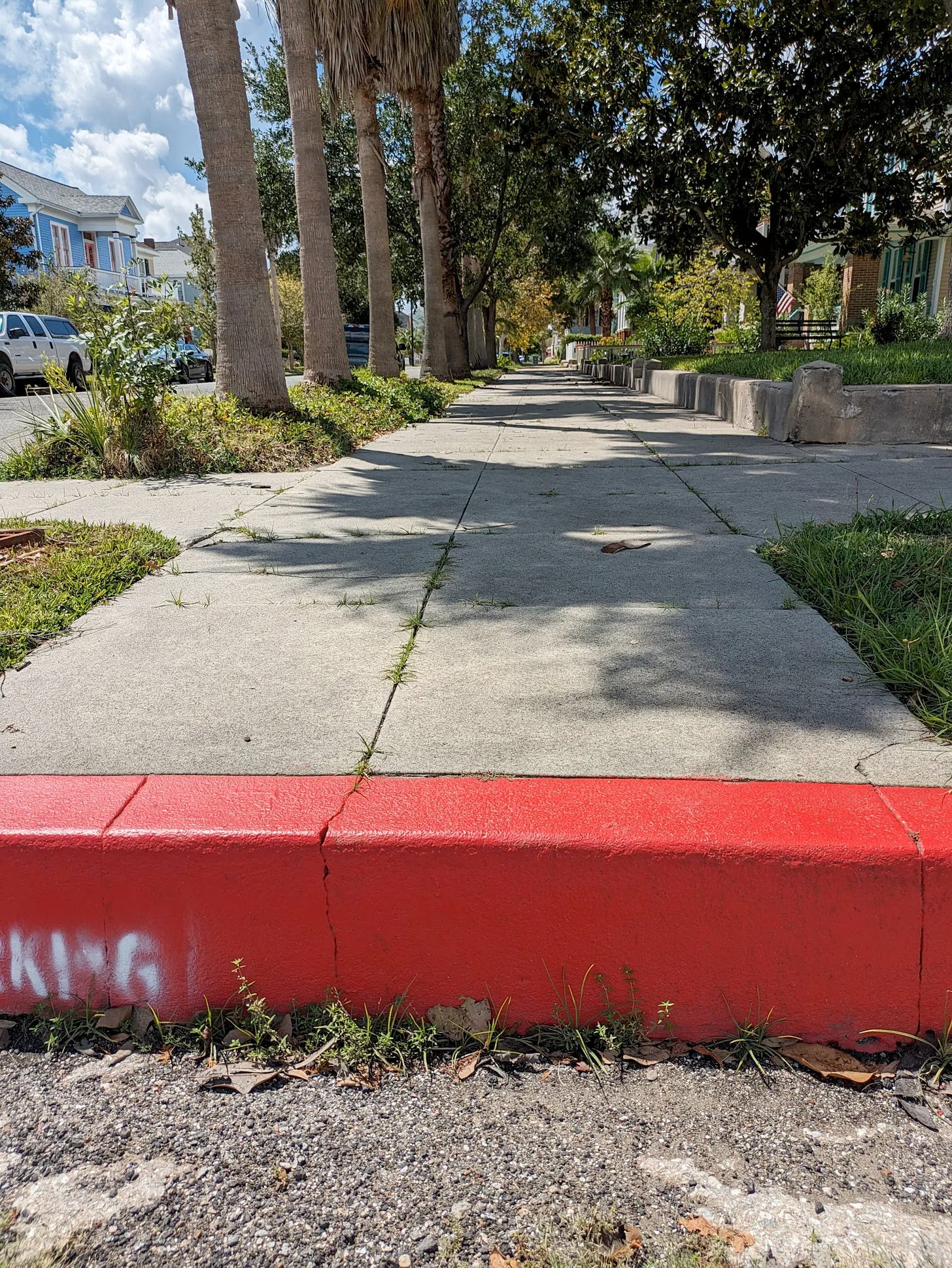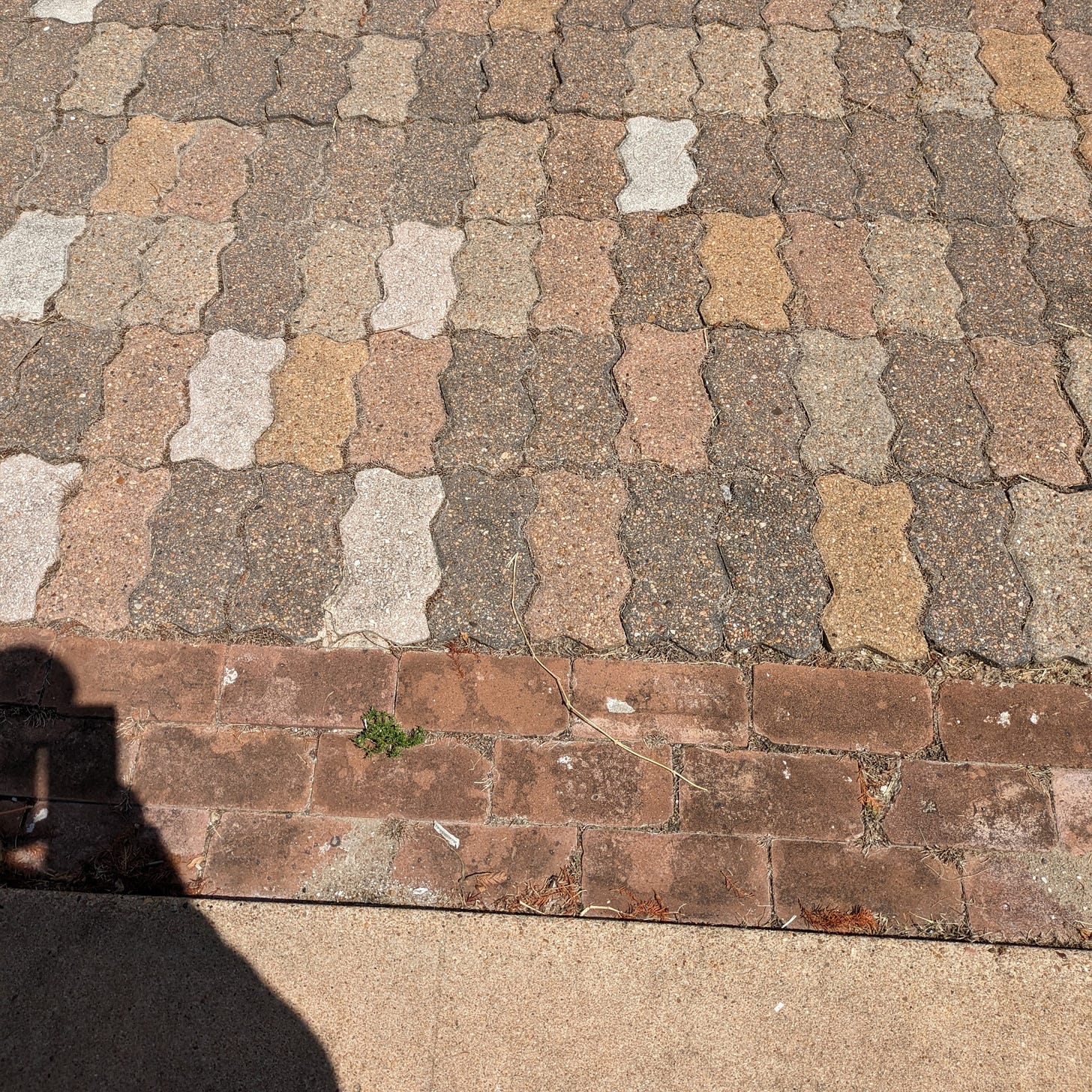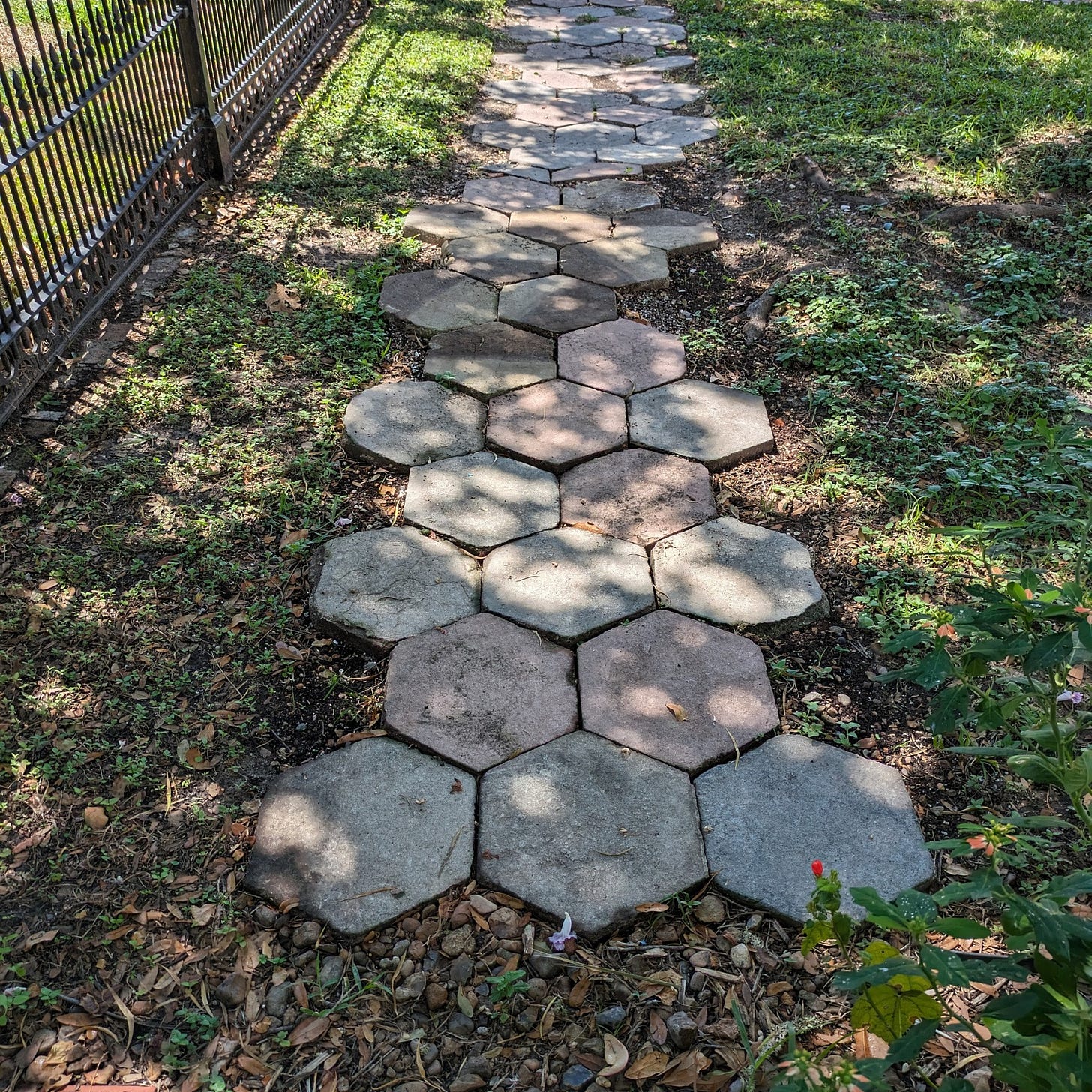What’s wrong with this picture?
Here’s another block with the same quirk:
Galveston walkers will have an edge answering. Both are among the relatively few residential blocks in Galveston that have a continuous sidewalk. This is more common:
This was one of the first oddities to strike us when we first started visiting Galveston many years ago. We loved walking around the city, ogling its gorgeous old houses, rambling through its charming downtown streets on the northern bay side, then heading south toward the magnificent Gulf. At the risk of sounding precious, we were enchanted, not only by what we were seeing but by the fact that all of it was a walk away. It reminded me of when I visited Hawaii’s Big Island and in a single morning bicycled through three climate zones.
We moved here permanently in 2020, and three years later I can confirm our early hunch: Its walkability is one of Galveston’s great charms. The city is stuffed to the gills with historical interest; most residents know that. But I think many forget that, because land is scarce and the city compact, most destinations are a walk or, for the elderly or disabled, a two-wheeled roll away.
That’s why sidewalks here are important, and why it seems short-sighted that the city doesn’t do its damnedest to build more of them, or, if it's a matter of legalisms in the city charter, to encourage homeowners to build them, particularly where only a single house on a block lacks one. Pedestrians are either forced to walk across someone’s lawn – which feels like trespassing, and might be actual trespassing, since the strip where a sidewalk would go isn’t public land and there’s no easement – or detour into the road and traffic.
The manageable risk of the road detour for the able-bodied becomes worse for those in wheelchairs. They must first find an adjacent driveway to get into the road, and then find another to get back to the sidewalk. Since many homes in Galveston lack driveways, this isn’t as easy as it sounds. The result is that the disabled are frequently forced to use roads as sidewalk substitutes.
The city tacitly encourages homeowners to build sidewalks by assuming the cost of labor (owners buy the materials) but does little to publicize this. The previous owners of our house lived here 10 years before learning that the city would split the cost.
Nevertheless, the absence of sidewalks in front of some of the city’s grandest homes tells me it’s not always about money. Why do affluent property owners choose not to pony up for this simple gesture of courtesy to their neighbors? That’s an honest, not a rhetorical, question.
Here’s another honest question: The residences that most often lack sidewalks are on corner lots, and many of them were once corner stores built before the reign of cars. They relied on customers who walked to their shop. Were there no sidewalks in front of these stores? Or were they eventually covered over after the store closed down?
Most sidewalks, like ours, are – forgiveness please – pedestrian: standard, sectioned concrete. They’re nothing to look at. (A neighbor’s child has fixed that problem in front of her own house by chalking pictures of her dogs and favorite cartoon characters. We should hire her.)
Others, however, show the same attention to aesthetics as the houses. Here’s a sampling of walkways within four blocks of us:
Variety and visual appeal are happy accidents of the city washing its hands and leaving this simple infrastructural responsibility to homeowners.











